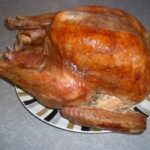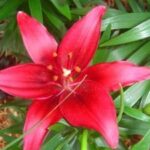Lamb’s Ear is a weed in its native Turkey. It will grow anywhere but prefers loose soil and a little drought. The soft silvery foliage resembles a lamb’s ear in both looks and feel. They are low creeping plants that will reproduce themselves and although they do produce light purple flowers on two foot spikes, the plant itself only grows about one foot high.
My plant
I have had my Lamb’s Ear for about five years. I purchased it because I thought it felt funny, strange, and different. I just liked it. Since I have kept it potted and in mostly shade it has not grown and taken over my yard as it is so reputed to do. The grandchildren like to stoke the leaves and are very fascinated with the plant.
Cultivation
The lamb’s ear is easy to grow from seeds and will be fully matured within a year. They will reproduce and spread by both root and seed. They are heat and drought resistant, but do need regular watering, just not every day! And they prefer to be watered from below rather than getting the leaves wet. If you are planting in the yard or garden it does have a tendency to take over the plot and will need to be thinned every two to three years. I keep mine in a pot outside in my front yard and we have all kinds of Louisiana weather. It has even survived snow for a few days without any extra protection, other than just being near a tree!
Harvesting
The leaves may be harvested just before the flowers appear and dried for use later.
Medical Uses
Lamb’s Ear was reportedly used to bandage wounds in olden times, the softness against an open wound would be comforting and some reports say it would heal up a small cut in just a few hours. It is also known as “woolly woundwort” and is a relative to other wound type plants, such as marsh woundwort. It is possible that Lamb’s Ear also has the same antiseptic and antispasmodic properties to help heal wounds rapidly, so I can understand why the herbalists used it hundred’s of years ago to bandage wounds.
Culinary Uses
It can be used for salads; eaten raw or steamed as greens. The dried leaves can also be made into a tea.
What I like best
I have Fibromyalgia and I like to just sit and rub a small leaf between my fingers when I am in pain. It has a way of relaxing you nothing else does… except to sit and pet a real lamb.




